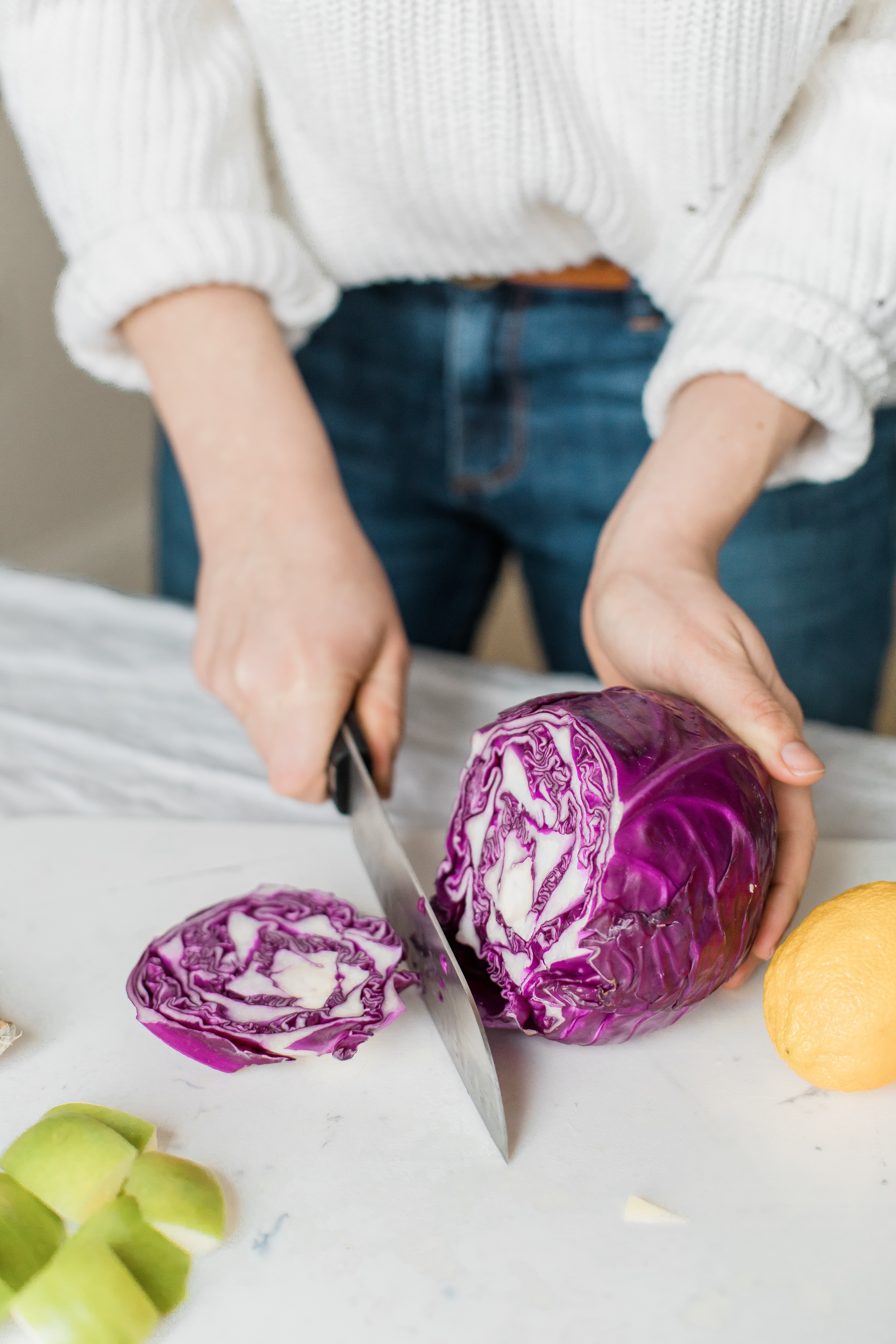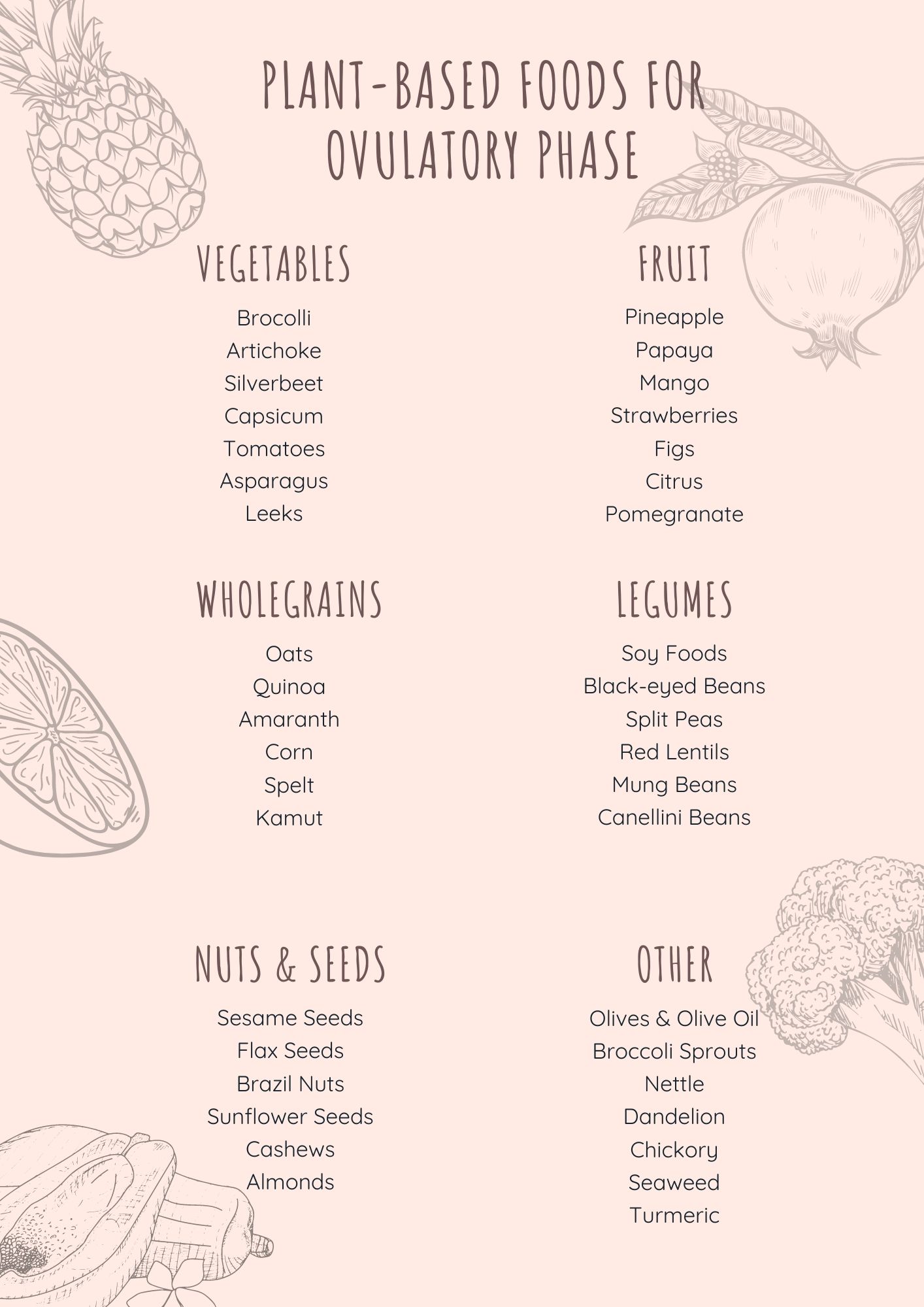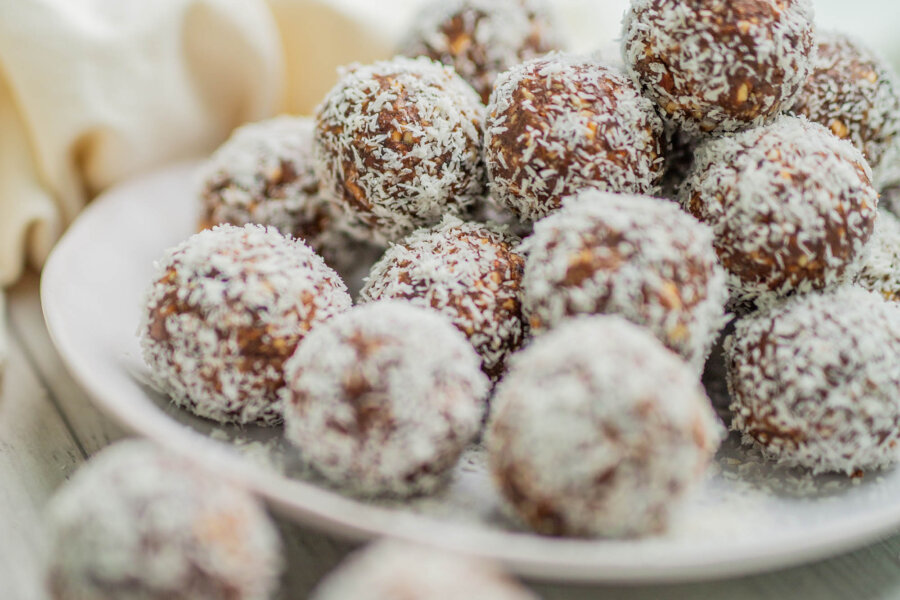The event of ovulation itself takes only 12- 24 hours. This is the time when pregnancy occurs if an egg is fertilised. The ovulatory phase is only a short phase lasting about 3 days when hormones are at their highest. During this time, a distinct switch happens. Estrogen reaches its peak before dropping sharply to allow progesterone to take over. Read my menstrual phase article here: https://hazelandcacao.com/understanding-the-menstrual-cycle/
Unlike the other phases of the menstrual cycle eating for ovulation can be a little more difficult mostly because there are many things that can interfere with the timing of ovulation eg, stress, illness, alcohol etc from month to month and because ovulation only lasts a short period of time. Personally, I like to focus on foods for ovulation about 3-5 days in and around ovulation. The main focus of ovulation should be high-fibre foods that support the metabolism of estrogen in the liver and gut as well as histamine-clearing foods.

Zinc and calcium requirements are still high during ovulation as they were in the follicular phase, but soon after ovulation magnesium and vitamin B6 requirements increase to help aid progesterone production. During this phase, focusing on phytoestrogen-rich foods (soy and flax) is helpful to balance estrogen. Liver-cleansing foods like bitters, citrus, green leafy vegetables, garlic, avocados and olive oil help the liver process high levels of estrogen. Broccoli sprouts are one of the most potent foods for assisting the liver to deal with high estrogen. They contain compounds called sulforaphane and DIM, which both help the movement of estrogen (and many other hormones and toxins) through the liver and are powerful at preventing estrogen-dependent breast cancer. Once estrogen moves through the liver it is sent through the gall bladder to the gut to be eliminated or reabsorbed as needed. Ovulation is a good time to focus on high-fibre foods (with plenty of water) like chickory, artichoke, leeks, whole grains and legumes to help feed the estrobolome in the gut and deal with the excretion and reabsorption of estrogen.
High estrogen levels are also known to activate mast cells and increase histamine as well as decrease an enzyme called DAO which helps break down histamine in the body. This means underlying allergies eg, hay fever, dust allergies, food allergies, asthma, etc can be worse at this time of the month. Vitamin C-rich foods are the best for clearing out histamine and are also beneficial for lowering stress, boosting progesterone and improving egg quality. Pomegranates are wonderful at supporting ovulation and egg quality. Pomegranates help balance estrogen, boost progesterone as well as improve egg quality due to their high antioxidant content, If a woman does suffer from increased allergies around ovulation, a focus on antihistamine foods may be appropriate. The best-known antihistamine compounds are quercetin, papain and bromelain. Quercetin can be found in onions, apples, grapes, and citrus among other foods. Bromelain can be found in pineapple and papain is found in papaya or pawpaw. However, this should be approached with caution since these foods can be good for some but can actually induce histamine release in people with histamine intolerance or hives. Beyond this honey and bee pollen ( if not strict vegan) stinging nettle and butterbur have been shown to assist people in reducing allergy symptoms.
A focus on iodine-rich foods around ovulation may also be warranted. Iodine is one of the most common deficiencies across the board for all dietary patterns. Beyond the crucial effects of iodine on the thyroid, iodine is also needed for balancing estrogen in the body and is especially helpful for cyclical breast pain and period pain. Iodine may also help clear excess histamine in the body so may assist with increased allergy symptoms at ovulation. Good sources of iodine are various seaweeds like nori, dulse, kelp etc. as well as iodised salt.
Personally, I don’t think alcohol is appropriate for hormones at any time of the month, but it may be wise to be especially mindful of alcohol consumption around ovulation. Alcohol almost immediately raises estrogen by almost double (because no estrogen is able to be processed in the liver in the presence of alcohol) as estrogen is already high this can severely worsen estrogen dominance and cause widespread inflammation. This is significant to mention around ovulation because this is usually the time women are most social and are more likely to want to drink with friends.
These are just some of the foods to focus on around ovulation. All plant foods are helpful at all times of the month.










